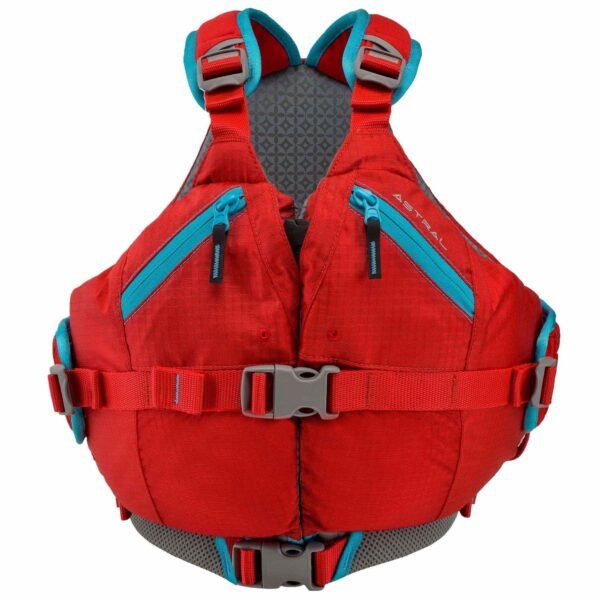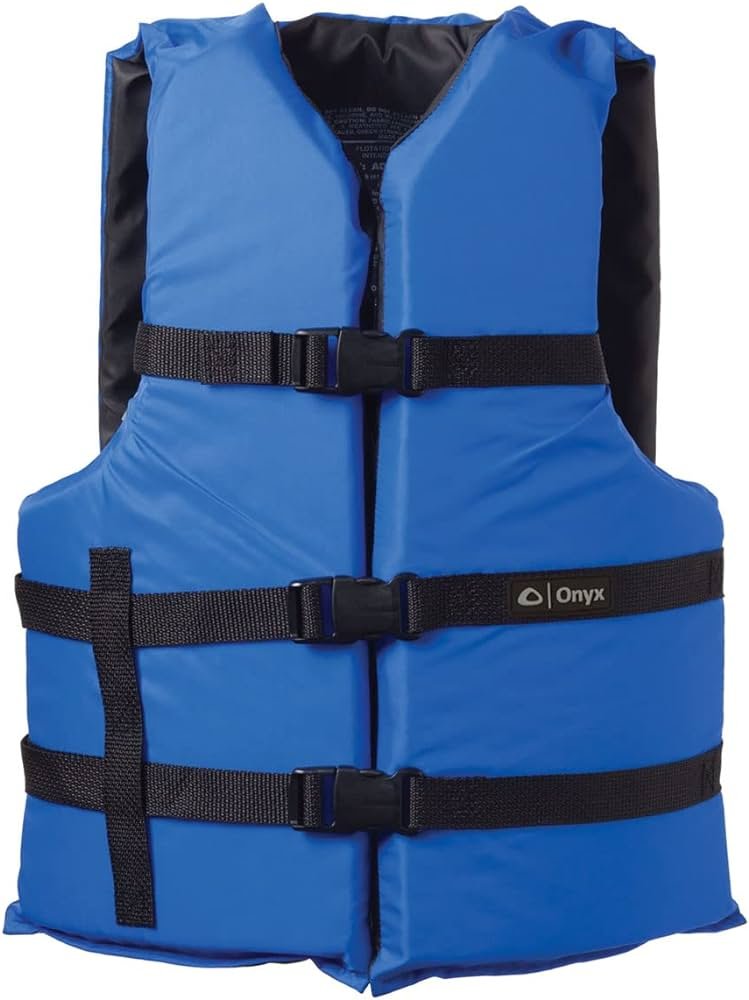Does A Life Jacket Make You Float?

Few equipment are quite as important as the basic life jacket when it comes to water safety. A life jacket also referred to as a personal flotation device (PFD), is an essential piece of gear for anyone going into the marine environment.
However, have you ever pondered, “Does wearing a life jacket make you float?” Let’s delve into the world of life jackets, and explore their functionality, buoyancy principles, and their indispensable role in water safety.
What is a Life Jacket?
A life jacket is a type of buoyant clothing that helps people stay afloat when they are in the water. Usually composed of foam and other buoyant materials, these jackets are covered with a sturdy material.
They come in various styles, including inflatable and foam-based, to cater to different water activities and preferences.
The Importance of Life Jackets in Water Safety
While participation in water-related activities could be enjoyable, there are risks associated. When an accident occurs, having a life jacket on might be the difference between life and death. Life jackets are crucial for the following reasons:
1. Buoyancy: Life jackets provide buoyancy, keeping individuals afloat even if they are unable to swim or are unconscious. To preserve energy and guarantee survival in water emergencies, this buoyancy is crucial.
2. Visibility: Rescuers can identify people in difficulty more easily since a large number of life jackets are brightly colored. This visibility is especially critical in open water or low-light conditions.
3. Regulatory Requirement: Boating and kayaking are among the water sports for which wearing a life jacket is mandated by law in several nations. Failing to comply may lead to penalties and compromise security.
4. Versatility: Life jackets are intended for use in a variety of water sports, fishing, and leisure boating. Their versatility makes them a practical choice for anyone spending time on the water.
Understanding Buoyancy
Understanding how life jackets make you float requires a grasp of the fundamental principles of buoyancy, which govern how objects behave when submerged in fluids like water.
1. Archimedes’ Principle
Archimedes’ principle, named after the ancient Greek mathematician and inventor Archimedes, is a cornerstone of buoyancy. It states that an object experiences an upward buoyant force equal to the weight of the fluid it has displaced when submerged in it.
To put it another way, an object will float if the buoyant force is higher than or equal to its weight and sink if it is less.
2. Buoyant Force
The upward push that a fluid applies to a submerged item is known as buoyant force. The pressure differential between the object’s top and bottom surfaces is what generates this force. An object is pushed upward more when the buoyant force is higher, opposing the pull of gravity.
Factors Affecting Buoyancy
An object submerged in water is buoyant for a variety of reasons. An object’s ability to float or sink is largely dependent on these elements.
1. Volume of the Object
The volume of the object is a key factor in buoyancy. Larger objects displace more water, leading to a greater buoyant force. This is why massive ships, despite their weight, can float—their massive volume displaces an enormous amount of water, generating a significant buoyant force.
2. Density of the Object and the Surrounding Fluid
Important components of buoyancy are an object’s density (mass per unit volume) and the density of the fluid it is submerged in. If the average density of an object is lower than that of the surrounding fluid, it will float. In contrast, an object will sink if its density is higher than that of the fluid.
3. Displacement of Water
The weight of the water that the submerged object has displaced is directly connected to the buoyant force, as was previously mentioned.
An object submerges itself in water and forces surrounding water to move aside, forming a region of reduced water level. The buoyant force exerted on the object increases with the volume of water displaced.
Role of Buoyancy in Floating
Buoyancy is the fundamental force responsible for making objects float. When you wear a life jacket, it is designed to provide buoyancy by incorporating buoyant materials that displace water and create an upward force greater than or equal to your body’s weight.
This counteracts gravity and allows you to stay afloat effortlessly. When it comes to life jackets, these buoyancy principles guarantee that the jacket will keep you afloat even in the event that you become unconscious or are unable to swim.
It’s not magic; rather, it’s science applied to save lives by using the knowledge of buoyant forces and Archimedes’ principle.

Source: BoatUS
Anatomy of a Life Jacket
When you look at a life jacket, it might appear to be a simple piece of equipment, but it’s a carefully designed safety tool engineered to keep you afloat in water.
Construction Materials and Design
1. Foam Panels
Most life jackets feature foam panels as their primary buoyant material. These foam panels are strategically placed throughout the jacket to provide buoyancy. They are designed to displace water, creating the upward force necessary to keep you floating.
The foam used in life jackets is lightweight, ensuring that the jacket doesn’t become overly bulky or cumbersome.
2. Buckles and Straps
Life jackets come equipped with buckles and straps to secure the jacket snugly to your body. These fasteners serve two essential purposes; they keep the life jacket in place during water activities, and they prevent it from riding up or slipping off.
Proper fit is critical for a life jacket’s effectiveness, and these elements play a vital role in achieving that fit.
3. Bright Colors and Reflective Materials
Many life jackets are designed in bright colors like orange, yellow, or neon green. These vibrant hues serve a practical purpose—they make you more visible in the water, helping rescuers locate you quickly.
Additionally, some life jackets incorporate reflective materials that shine brightly when exposed to light, further enhancing your visibility, especially in low-light conditions.
How Life Jackets Distribute Buoyancy
Understanding how a life jacket distributes buoyancy is key to comprehending its functionality. Life jackets are designed to provide buoyancy in specific ways to keep you afloat comfortably and safely.
1. Frontal Flotation
Life jackets are constructed with extra buoyant material in the front portion. This area refers to the position of your chest and upper body in water.
The frontal buoyancy guarantees elevation of your upper body, enabling you to effortlessly sustain a natural and steady posture during flotation. This is particularly important for maintaining a clear airway for breathing.
2. Back Flotation
While the front of the life jacket provides buoyancy for your upper body, the back is often designed with less buoyant material.
You can breathe easily and reduce your chance of toppling over thanks to this uneven distribution, which keeps you in a slightly slanted position with your face above the water’s surface.
Types of Life Jackets
Life jackets come in various types, each designed for specific water activities and conditions. Understanding the different types is crucial for choosing the right one for your needs.
1. Type I, II, III, and IV
- Type I: These are offshore life jackets and provide the highest buoyancy. They are designed for open, rough, or remote waters and can turn an unconscious person face-up in the water.
- Type II: Also known as near-shore buoyant vests. These are suitable for calmer waters and are less bulky than Type I jackets. They are not designed to turn an unconscious person face-up.
- Type III: These are flotation aids, often used for activities like kayaking or paddleboarding. They are comfortable and allow good mobility but may not turn an unconscious wearer face-up.
- Type IV: These are throwable devices like ring buoys or cushions and are not meant to be worn. They are used for quick deployment to a person in distress.
2. Inflatable and Foam Life Jackets
Inflatable Life Jackets: These are compact, lightweight, and comfortable to wear. They can be manually inflated or triggered automatically upon immersion. Inflatable life jackets are popular among boaters and anglers due to their low profile.
Foam Life Jackets: These are the traditional, bulkier life jackets filled with foam panels. They provide consistent buoyancy and don’t require inflation. Foam life jackets are often preferred for activities like kayaking and whitewater rafting.
Factors Influencing Floatation with a Life Jacket
While life jackets are designed to enhance buoyancy, several factors influence how effectively they keep you afloat in various situations.
1. Individual Body Weight and Composition
A person’s body weight and composition affect their buoyancy. Heavier individuals may need life jackets with higher buoyancy to stay afloat comfortably. Additionally, body composition, including muscle and fat distribution, can impact buoyancy.
2. Proper Sizing and Fit of Life Jacket
The fit of a life jacket is critical to its effectiveness. If a life jacket is too loose or too tight, it may not provide adequate buoyancy. Proper sizing ensures that the life jacket can do its job of keeping the wearer afloat without riding up or becoming dislodged.
3. Water Conditions (Calm vs. Rough Water)
The type of water you’re in plays a significant role in flotation. Life jackets are designed to work in various water conditions, but they may perform differently in calm, still water compared to rough, choppy water. Rough water can impact stability and the ability to keep the wearer’s face above the surface.
4. Proper Usage and Maintenance of Life Jackets
Even the best life jacket can fail if it’s not used and maintained correctly. Proper fastening of straps, regular inspections for damage, and following manufacturer guidelines for maintenance and care are essential to ensure the life jacket remains effective over time.
Importance of Wearing a Properly Certified Life Jacket
Wearing a properly certified life jacket is not just a matter of compliance, it is a matter of life and death. The importance of wearing a properly certified life jacket are:
- Reliability: Certified life jackets have undergone rigorous testing to ensure their reliability and effectiveness in water emergencies. They are designed to keep you afloat and increase your chances of survival.
- Legal Requirement: In many regions, wearing a certified life jacket is a legal requirement for specific water activities. Non-compliance can result in fines and penalties.
- Peace of Mind: Knowing that you are wearing a properly certified life jacket provides peace of mind during water adventures. It allows you to focus on enjoying the activity without worrying about safety.
- Visibility: Certified life jackets often feature bright colors and reflective materials, enhancing your visibility to rescuers and other watercraft.
Debunking Common Myths
When it comes to life jackets, misconceptions can be dangerous. In this section, we’ll debunk three common myths that can lead to false beliefs about life jacket usage and potentially compromise water safety.
Myth 1: Life Jackets Guarantee Floating
Reality: While life jackets greatly enhance your buoyancy and increase your chances of floating, they do not guarantee it under all circumstances.
Factors such as improper fit, damaged life jackets, or turbulent water conditions can affect their effectiveness.
It’s crucial to understand that life jackets are a vital tool for staying afloat, but they are not infallible. They should always be worn correctly and complemented by swimming skills for optimal safety.
Myth 2: Strong Swimmers Don’t Need Life Jackets
Reality: The ability to swim is valuable, but even strong swimmers can find themselves in situations beyond their control. Accidents happen, and fatigue or unexpected circumstances can quickly deplete one’s energy in the water.
Life jackets are designed to conserve energy and provide buoyancy, making them essential for swimmers of all levels. It’s a matter of preparedness and responsible water safety practices, not just personal swimming proficiency.
Myth 3: Only Children and Weak Swimmers Should Wear Life Jackets
Reality: Water safety knows no age or skill boundaries. While it’s particularly crucial for children and weak swimmers to wear life jackets, individuals of all ages and swimming abilities should wear them when engaging in water activities.
Accidents can occur to anyone, and wearing a life jacket is a proactive measure that significantly reduces the risk of drowning. It’s a wise choice for anyone spending time on or near the water, regardless of their swimming prowess.
How to Choose and Wear a Life Jacket
Choosing and wearing a life jacket correctly is paramount for your safety in aquatic environments. To ensure your life jacket serves its purpose, it must be well-fitted and maintained as appropriate.
Proper Fitting and Adjustment
A well-fitted and correctly adjusted life jacket is your best defense in the water. Life jackets come with straps that allow you adjust it as needed.
Chest Strap: Start by fastening the chest strap securely. It should rest just below your collarbone. Ensure it’s snug but not overly tight, allowing you to breathe comfortably.
Waist Strap: Next, secure the waist strap. It should sit at your natural waistline. Tighten it to eliminate any slack but maintain comfort and mobility. The waist strap helps prevent the life jacket from riding up.
Make any necessary adjustments to the straps to achieve a secure fit. Check for any twisted straps, and ensure they lay flat against your body.
Inspection and Maintenance Guidelines
Regular inspection and maintenance of your life jacket are essential to ensure its reliability.
- Visual Inspection: Examine your life jacket for any signs of wear, tear, or damage. Look for frayed straps, loose stitching, or punctures in the material.
- Zippers and Buckles: Check zippers, buckles, and fasteners to ensure they are functioning correctly. Ensure that all adjustments can be made easily.
- Inflatable Life Jackets: If you have an inflatable life jacket, inspect the CO2 cartridge for signs of corrosion or damage. Ensure the inflation mechanism is in working order.
- Cleaning: Clean your life jacket regularly with mild soap and water. Rinse thoroughly and allow it to air dry completely before storage.
Choosing the Right Life Jacket for Different Water Activities
The type of life jacket you choose should align with your specific water activity.
- Recreational Boating: For boating in open or offshore waters, opt for Type I or Type II life jackets. These provide the highest buoyancy and are suitable for extended periods in rough waters.
- Kayaking and Canoeing: Type III life jackets are ideal for kayaking and canoeing. They offer mobility and comfort while providing sufficient buoyancy for these activities.
- Paddleboarding: A Type III life jacket or a specialized paddleboarding life jacket is suitable. Ensure it allows freedom of movement while providing the necessary buoyancy.
- Fishing: Depending on your location and fishing conditions, consider a Type I or Type II life jacket for offshore fishing. Near-shore and inland fishing may be well-served by Type III life jackets.
- Children: Children should always wear appropriately sized and fitted life jackets, regardless of the activity. Choose life jackets specifically designed for children’s safety.
Additional Tips for Water Safety
Water safety goes beyond just wearing a life jacket. It involves a combination of knowledge, skills, and responsible practices.
Swimming Skills
Having proficient swimming skills is a fundamental aspect of water safety. Strong swimming skills enable you to navigate water independently, reducing your reliance on life jackets in calm conditions.
Proficiency in swimming breeds confidence, allowing you to enjoy water activities more fully and calmly. In case of an unforeseen situation, swimming skills can be life-saving. You’ll be better equipped to handle emergencies and assist others.
Keep your swimming skills sharp with regular practice. Like any skill, they can deteriorate over time.





